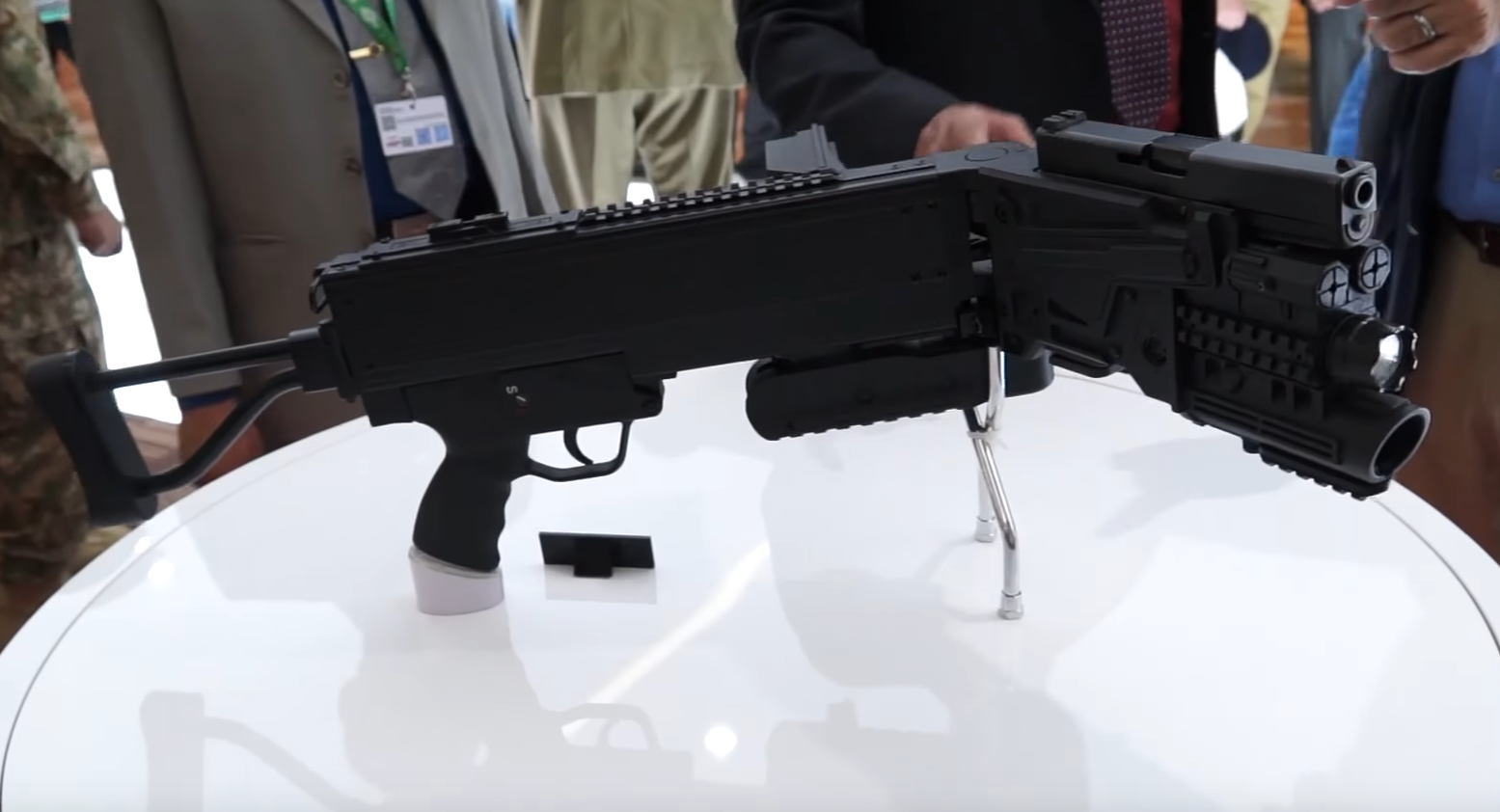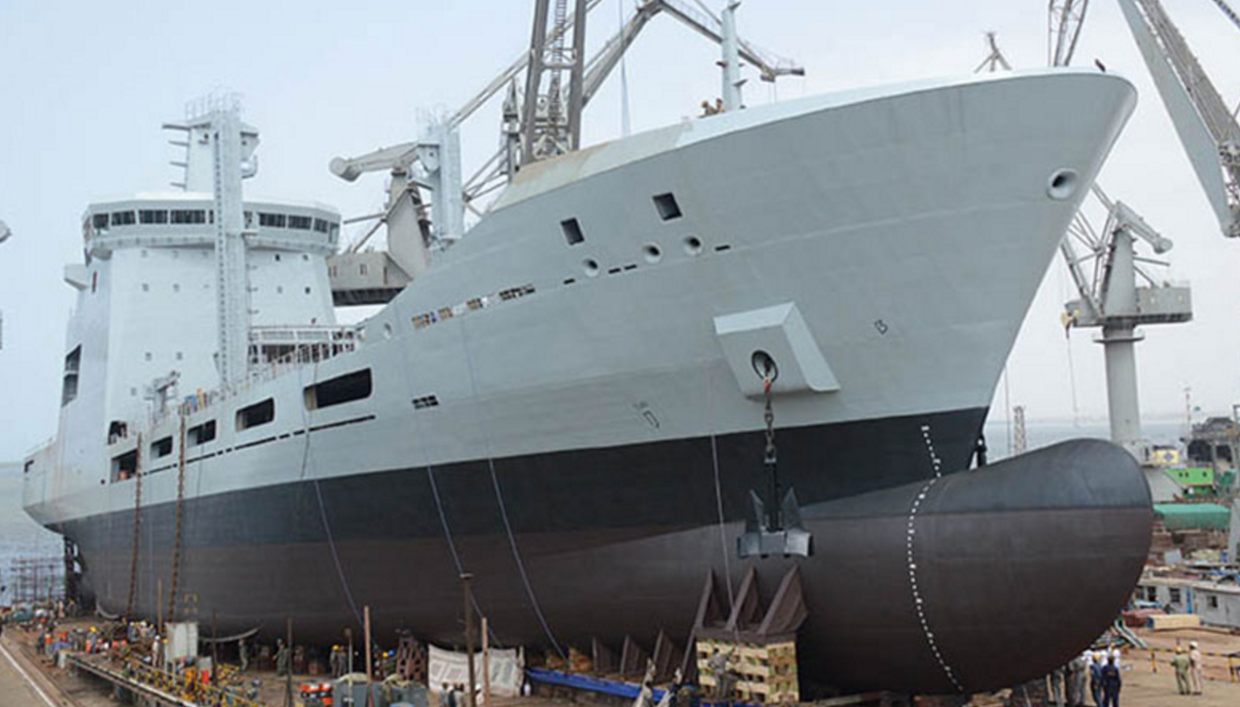2319Views 6Comments

Pakistan Ordnance Factories’ (POF) track to competitive growth (Part 1)
This is a three-part series discussing Pakistan Ordnance Factories’ (POF) development and long-term commercial engagement plans. Part one offers a broad overview, especially of 2016, in POF’s activities and the Government of Pakistan’s focus on steering the company to be commercially competitive. It also examines POF’s memoranda-of-understanding (MoU) with Czech and Polish companies and the relevance of those MoUs to POF’s plans. Part two studies POF’s letters-of-understandings with Fiocchi, CSG, and PSG in relation to its hopes for commercial viability. Part three concludes with an overview of POF’s new product catalogue, which will comprise of licensed off-the-shelf and domestic designs.
Pakistan appears to be intent on significantly upgrading Pakistan Ordnance Factories (POF), the Pakistani armed forces’ principal munitions supplier. Traditionally, POF had been counted upon to supply the forces with small-arms and munitions (e.g. small-arms ammunition, tank shells, artillery shells, etc), especially in times of war where the steady supply of ordnances are essential. Thus, production had been focused on meeting domestic needs primarily, and surplus stocks were put for sale on the world market.
In 2016, POF registered its single largest export order in history in a sale to Saudi Arabia. As a result, POF managed to secure close to $100 million U.S. in overseas sales for the year. Although the sale to Riyadh is not necessarily the cause, the Pakistani Ministry of Defence Production (MoDP) began pushing for greater self-sufficiency, or to be precise, lesser reliance on government subsidies, in the defence industry. In this respect, POF was likely seen of being able to achieve self-sufficiency through sales to overseas markets.
POF’s markets its small arms portfolio based on affordability, which it can achieve thanks to Pakistan’s lower labour and material costs and cheaper currency. Pakistan’s thinner regulatory barriers for trading arms also makes it an attractive supplier for buyers unable to readily access small arms from established suppliers in the West, such as Heckler & Koch (HK). Saudi Arabia’s transactions from Pakistan could have been motivated, in part (along with its campaign in Yemen), by its inability to continue dealing with HK.
The global small arms market could be worth $4.92 billion U.S. by 2020 (Market Watch). The military small arms market is the dominant segment, and specifically, the Middle East and Asia Pacific are expected to generate most of the foreseeable growth (Market Watch). Granted, a substantial portion, if not most, of the market activity will be undertaken by domestic ordnance manufacturers in countries in those regions. For example, the United Arab Emirates (UAE) is home to its own small-arms maker in Caracal International.
It would be disingenuous to expect POF to become a large exporter, but that is not the main objective for either POF or the MoDP. Rather, it is for POF to earn enough in the global market for it to operate without relying on subsidies from the government. To be fair, considering POF’s centrality in terms of supplying the Pakistani military with small arms and munitions, it would be uncommon for it to be in the position of operating without domestic work. That aside, POF has the potential to capture some of the market.
The timing of increased commercial alignment has coincided with the Pakistan Army’s push to modernize the small arms issued to its infantry. In March 2016, the Pakistan Army was examining five rifles at POF, and in May 2016, POF Chairman Lt. General Omar Mahmood Hayat informed the National Assembly’s Defence Production Committee that a replacement for the H&K G-3 battle rifle (7.62×51 mm) was on the roadmap. In June 2016, POF signed a memorandum-of-understanding (MoU) with an Italian industrial vendor – likely Sir Meccanica – for support in upgrading its facilities.
Ultimately, any change to POF or its products would be contingent on the requirements of its principal buyer, the Pakistan Army. However, an opportunity to scale the cost of improving POF across domestic needs and market access must have been felt in the MoDP and armed forces leadership. At the 2016 International Defence Exhibition and Seminar (IDEAS), which had taken place in November in Karachi, POF’s modernization track – of its facilities, products, and commercial engagement plans – became clear.
Three overarching elements to POF’s modernization plans could be observed: First, the modernization of POF’s manufacturing facilities. Second, linking POF, via partnerships, to the supply chains of other vendors. Third, the refreshing of POF’s small arms catalogue. Part two examines POF’s MoUs with Czech and Polish industry groups and discusses how these agreements could fit in POF’s modernization plans.
Infrastructure Modernization/Overview of MoU signatories
On the second day of the 2016 International Defence Exhibition and Seminar (IDEAS), Pakistan Ordnance Factories (POF) signed memoranda-of-understanding (MoUs) with industry groups from the Czech Republic and Poland. POF appears to be sourcing manufacturing systems (and possibly capacity building/training support) from many individual companies. In other words, it is not handing the entire modernization effort to one firm.
The Czechoslovak Group (CSG) represents 22 companies engaged in manufacturing efforts, not just in the defence industry, but infrastructure and the consumer market as well. Excalibur Army is a munitions manufacturer with experience in small arms, tank, and artillery ammunition production.
Within CSG, there is another industry group by the name of MSM, under which there is a company named Operation Novaky, which has experience producing specialized equipment for armament manufacturing lines. These include equipment for preparations and mold, handling, control and measurement, and equipment for producing welded parts and structures. Another MSM firm, ZVS, is a munitions producer with experience in manufacturing 125 mm tank shells, 122/152/155 mm artillery shells, and 81/98/120 mm mortar shells. ZVS also produces equipment for manufacturing those munitions.
Polska Grupa Zbrojeniowa S.A (PGZ) represents 33 development, manufacturing, and services companies in Poland including, among others, Fabryka Broni. Fabryka Broni is Poland’s principal small arms designer and manufacturer, and the main supplier of small arms to the Polish armed forces. Mesko is a leading manufacturer of ammunition for small arms, artillery, and tanks. Dezamet is another munitions maker, but it has a stronger focus on 40 mm grenades, 60/81/98/120 mm mortar shells, 155 mm artillery shells, and detonators. Zakłady Mechaniczne “Tarnów” offers manufacturing services, but it does not appear that it is a machine manufacturer. That said, its experience could be of interest in terms of training/education.
With CSG and PGZ, POF has set a wide net in terms of what it could potentially acquire – materially and in terms of skill-building – from the Czech Republic and Poland. Specific areas of consideration could include enhancing POF’s capacity to manufacture using steel and polymer, which are essential materials in new generation small-arms. The expertise in this area would require not only managing the material but being able to manufacture in an efficient manner such that POF retains its competitiveness in cost and that too with no impact on quality control and/or its ability to produce large numbers of small arms.
Evidently, significant investment is planned for POF in terms of infrastructure upgrades, and the sources providing solutions for this effort are many. However, Pakistan will need to create a long-term strategy for POF’s infrastructure development, one that opts to build domestic industrial capacities such that POF is not entirely reliant on overseas suppliers for essential machinery. Investments in these areas will not only benefit POF but other defence and civil industry suppliers in Pakistan as well.


6 Comments
by Shakeel
A good analysis Quwa. POF is well positioned to make inroads into overseas markets.
by Sami Shahid
Bilal Khan , I’ve heard that the USA is imposing some sort of a tariff on Pakistan Ordinance Factory. Can you explain ?
by Rizwan
I was going to ask the same question. Apparently a recent “Project Alpha” report from King’s College, London, is coming down heavy against Pakistan
by jamshed_kharian_pak
With very large domestic market Armement industries of IR Pakistan should continue R&D same time Open Our market for the competition to find the best quality weapons
by Sami Shahid
Can you tell more about it ?
by Rizwan
I only saw this article in The News: https://www.thenews.com.pk/print/171787-New-US-curbs-may-harm-Pak-defence-commercial-concerns
and this piece on the Project Alpha web site: https://projectalpha.eu/research-opens-a-window-into-pakistans-nuclear-weapons-programme/